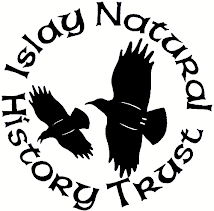I found this Pale Brindled Beauty in the public toilets at Bridgend on Tuesday (15th), appropriately in the gentlemen's side of the facility as this is the male of the species. This slightly blurred photograph was taken on my iPhone. As someone has since commented, taking photographs in public toilets is something to be rather cautious about and I decided not to go back in with my camera! The female moth is distinctively different, but I had to reply "no, I didn't" when asked if I had checked for one in the ladies' side!
There are no previous records for Islay for this species, which flies between January and March, though there were three records on Jura back in 1980, which have to be regarded with suspicion as they were all in early September with no mention that they were pupae, which is the stage the moth would be in at that time of year. So this may well be the first record for the vice-county, i.e. Islay, Jura and Colonsay.
Malcolm
Friday, 18 March 2016
Thursday, 17 March 2016
New Zealand Flatworm - Islay distribution - quick poll
On the back of our next talk the irony of the world exporting its wildlife to this remote island ecosystem. New Zealamd wildlife is giving payback - the New Zealand flatworm.
The irony is that for all
the introduced species sent in their direction New Zealand Islay . It may have
been present quite a few years now but I have only recently met one on these
unpleasant creatures. Why are they important? well they like to eat our native
Earthworms that do an important job of mixing up and aerating the soil, and
provide food for a whole host of bird species.
Fiona MacG
Next Talk 22nd March - New Zealand - Ecological Mayhem!
It seems to have been a popular destination for

But New Zealand New Zealand
Come along and discover
the impacts that new species can have when they don't complement the native
wildlife.
Subscribe to:
Posts (Atom)


















